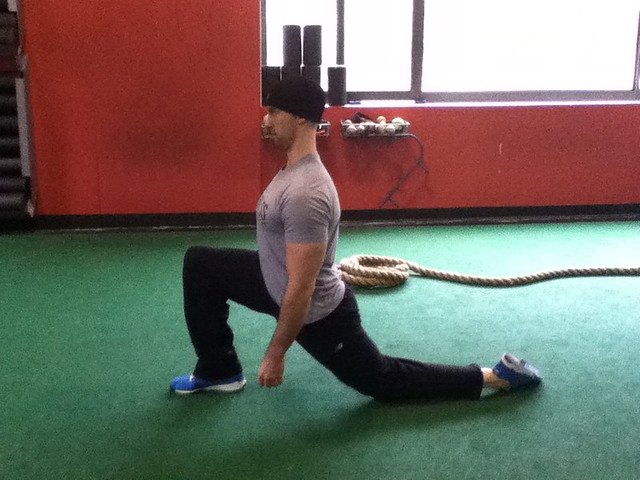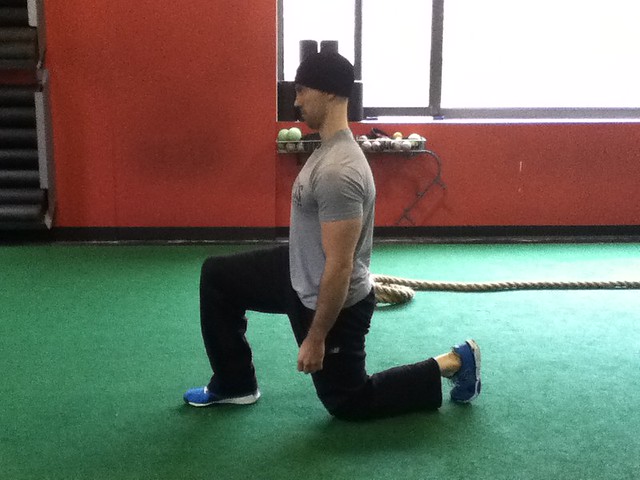I’m an avid reader. At any given time I’m reading 3-4 books at once. I’m always working my way through something related to my field. These are what I like to call the “hafta reads.”
Meaning, I hafta read “x book” in order to stay sharp and on top of things related to my profession (HERE are some of my favs).
Not coincidentally these are also the books which (sometimes) take me F.O.R.E.V.E.R to get through, which shouldn’t come as a surprise. Topics like humeral anterior glide syndrome or the Patheokinesiologic model of movement doesn’t make for light reading.
In addition I like to read a fair amount of non-fiction, particularly self-improvement books or books on behavioral economics. As you can surmise, I’m always the life of the party!
I have a 40 minute commute to and from work each day, so I’ll also be working my way through a book from Audible.com, assuming I’m not listening to ESPN or EW Radio.
And like any true nerd I’m always game for a good piece of fiction, particularly science-fiction.
I started reading The Martian by Andy Weir two days ago, and I cannot put it down. Without giving away too many details it’s about astronaut Mark Watney (who’s sense of humor given his circumstances is impressive) and how his crew was forced to evacuate the planet while thinking him dead.
Only he’s not!
Mark is stranded on Mars’s surface with no way to signal Earth that he’s alive. OMG I’m biting my fingers nails as I type this!
It’s sooooo good. And not for nothing, is currently being made into a movie starring Matt Damon and Jessica Chastain and directed by Ridley Scott.1
As is the case every time I read something, I try to find parallels between what’s being written and how I can apply a certain theme or idea to what I do as a coach.
If you can believe it, I found something.
The Martian is about a guy who’s stranded and alone on a desolate planet. I, along with many of my colleagues, often feel stranded and alone when it comes to going against the grain on some common fitness myths and fallacies.
Take for instance……..stretching.
Ever notice how everyone has tight hamstrings or tight hip flexors? Also ever notice how having “tight hamstrings” (and stretching them) is the answer for everything?
Low back pain? Tight hamstrings.
Your butt “winks” at the bottom of a squat? Tight hamstrings.
Chronic hamstring strains? Tight hamstrings!
Bad hair day? It’s tight hamstrings, yo!
Facetiousness aside, this isn’t to imply that there aren’t people out there who have short or stiff hamstrings (or short and stiff anything). They do! Likewise, by all means, there are millions of people who could benefit from stretching those sons-of-bitches, and could benefit from some additional stretching in general.
There’s no denying the many advantages that static stretching provides. I’m not hatin. Although, I’d be remiss if I didn’t state that how most people stretch (and for what length of time they stretch) really does nothing other than increase the tolerance to the stretch.
I.e., you’re not “lengthening” anything.
In order to increase the length of a muscle you need to either 1) lengthen bone (um, ouch!) or 2) in the case of someone who truly presents as short or stiff, increase the total number of sarcomeres in series (which takes a metric shit-ton of stretching).
Ask physical therapist Bill Hartman how long someone really needs to stretch in order to have a significant affect and/or to add sarcomeres, and he’ll tell you the starting point is 2-3, 10 minute holds per day. Working up to 20 minute holds.
That cute 30-second “stretch” you’re doing isn’t really doing anything.
However getting back to my original point, I do find the default suggestion of telling someone to “just go stretch” is a bit overused. While a great piece of advice for some people, it could be a nightmare for others and the exact reason some people remain in pain and never see much improvement(s).
And it’s with that I’d like to highlight some common stretching mistakes and misconceptions.
1. Are You “Tight” or Just Out of Whack?
You’d be surprised how often it’s the latter. Simply put: most people aren’t so much tight as they are misaligned.
It goes back to something physical therapist and strength coach, Mike Reinold, brought up in casual conversation not too long ago.
Which is more important to hammer first: stability or mobility?
Those trainers and coaches who swing on the stability side of the pendulum tend to be the overly cautious type who have their clients stand on BOSU balls.
Those on the mobility side snuggle with their copy of Supple Leopard every night.
Neither approach is inherently wrong so much as they’re flawed (if haphazardly assumed as “correct” for every person, in every situation).
If you strengthen (stabilize) in misalignment you develop imbalances. If you stretch (mobilize) in misalignment you develop instability.
Take someone who presents with excessive anterior pelvic tilt. It’s not uncommon for said person to complain about constant “tight” hamstrings, and no matter how often they stretch them, they stay tight.

You would think that after weeks, months, or sometimes even years of non-stop “stretching” they’d see some improvement, right?
Wrong.
The reason why they feel tight all the time has nothing to do with their hamstrings, but rather pelvic positioning. Unless you address the position of the pelvis – in this case, excessive anterior pelvic tilt – you can stretch the hamstrings until Taylor Swift writes a song about not being broken up with (<– not gonna happen), and you’ll never see improvement.
Think about it this way: in this scenario the reason why the hamstrings feel tight is because they’re lengthened and firing on all cylinders. By stretching them you’re just feeding into the problem in the first place!
We could easily chalk this up to the classic Lower Cross Syndrome as popularized by Dr. Vladomir Janda and stretch what’s tight (hip flexors, erectors), and that would be a step in the right direction. Cool.
But I feel for most people that’s not going to solve the problem and raises another issue altogether (which I’ll discuss below).
For most people the bulk of their efforts should revolve around including more things which encourages posterior pelvic tilt. Things like…..
Posterior Pelvic Tilt Hip Thrust
Cueing PPT When Squatting and Deadlifting
Reverse Crunches
Deep Squat Belly Breathing w/ Lat Stretch
** Oftentimes the lats are stiff/short and pull people into more of an extension posture. This breathing drill helps to turn off the lats while also cueing PPT.
https://www.youtube.com/watch?v=SndY5ctyU8U
2. You’re Doing It Wrong
You know how I said above that performing hip flexor stretches (stretching what’s tight) may be beneficial but that it brings up another issue altogether. No? Oh, you skipped that part? Well, FML!
Let me repeat:
We could easily chalk this up to the classic Lower Cross Syndrome as popularized by Dr. Vladomir Janda and stretch what’s tight (hip flexors, erectors), and that would be a step in the right direction. Cool.
But I feel for most people that’s not going to solve the problem and raises another issue altogether (which I’ll discuss below).
Stretching the hip flexors is fine and dandy, and a good idea…..assuming you’re doing it correctly.
Here’s how most people stretch their hip flexor, though:

Most aren’t cognizant of pelvic positioning and just go into MORE anterior pelvic tilt and end up hanging on the ligaments of their lumbar spine. This is NOT a hip flexor stretch, and I’d argue is doing more harm than good.
Instead, I coach people to do what I like to call “doing shit right.”
Here’s how you perform a proper hip flexor stretch:

– In the half kneeling position, think chest up.
– Dig the toes of your trailing leg into the ground (toes point into the floor).
– On that same side, squeeze the glute of the trailing leg…..HARD!!! This will posteriorly tilt the pelvis. This cue alone will DRASTICALLY increase the effectiveness of the stretch.
– From there, without cranking through the lower back, gently shift your weight forward a few ticks. It won’t take much. The idea here is to move into a “deeper” stretch through the hip joint itself and not the lumbar spine. SQUEEZE THAT GLUTE!!!!
If you’d like to up the ante, because the rectus femoris crosses two joints – the hip and knee – you can place one hand on the wall for support and reach back and grab the ankle of the trailing leg with the other hand and perform the stretch in that fashion. Honestly, though, most will feel plenty enough of a stretch without doing that.
3. Are You “Tight” or Just Unstable?
I posted this Tweet the other day:
If I had nickel for each time someone told me they had “tight” hamstrings, only to test 5/5 on the Beighton Score, I’d have a lot of nickels
— Tony Gentilcore (@tonygentilcore1) November 11, 2014
This sorta mirrors my comments above – when discussing alignment – but deserves a bit more love here.
I can’t tell you how many athletes (particularly baseball players) and even general fitness clients I’ve assessed who adamantly tell me how “tight” they are (and have been told how tight they are from physical therapists) only to pass every range of motion test with flying colors and test a 5/5 (technically 9/9) on the Beighton Laxity Score.
In geek speak it’s called protective tension.
Yet, there they are……stretching, stretching, and doing more stretching.
STOP IT!!!!
These people have so much ROM and are so unstable that the body perceives it as a threat and as a results ends up putting on the emergency breaks (your body doesn’t want you to hurt yourself!).
Muscle will hold tension in the presence of implied instability of associated joints. Muscles will relax when the implied instability of the associated joint(s) is improved.
Stretching a tight muscle without improving stability will result in a muscle that remains tight.
As classic example is the person who has a poor squat pattern due to “tight hips.” They lean forward too much, their knees cave in, and they present with all sorts of compensation patterns because they’re so tight.

Of course, they’ve been doing nothing but stretching and implementing a litany of hip mobility drills to address the problem. To no avail.
Try this: have that same person hold a 5-10 lb plate with their arms extended out in front of their body and see what happens. PRESTO……..more often than not you’ll see a profound difference on not only how the squat looks, but how deep they can go.
Holding the weight out front serves as a counterbalance (easier to hip hinge back) and forces the anterior core to engage. Hence provides more stability.
And this phenomenon can be applied to other things as well. As Dean Somerset has noted on several occasions, “muscles do not have origins or insertions, merely anchors to bone.” The body is essentially one muscle connected by fascia. Anyone who disagrees can read Thomas Myers’ Anatomy Trains and get back to me on that.
Or you can watch this video by Dean and see how he’s able to increase one’s hip ROM by having them perform a few repetitions of planks (done correctly).
NOTE: this is the type of voodoo stuff Dean and I go over in our workshops. We’ll be in LA in two weeks.
So, are you tight or just unstable?
Is stretching always the answer?
Are you even stretching the right way? Hmmmmmmmm.


